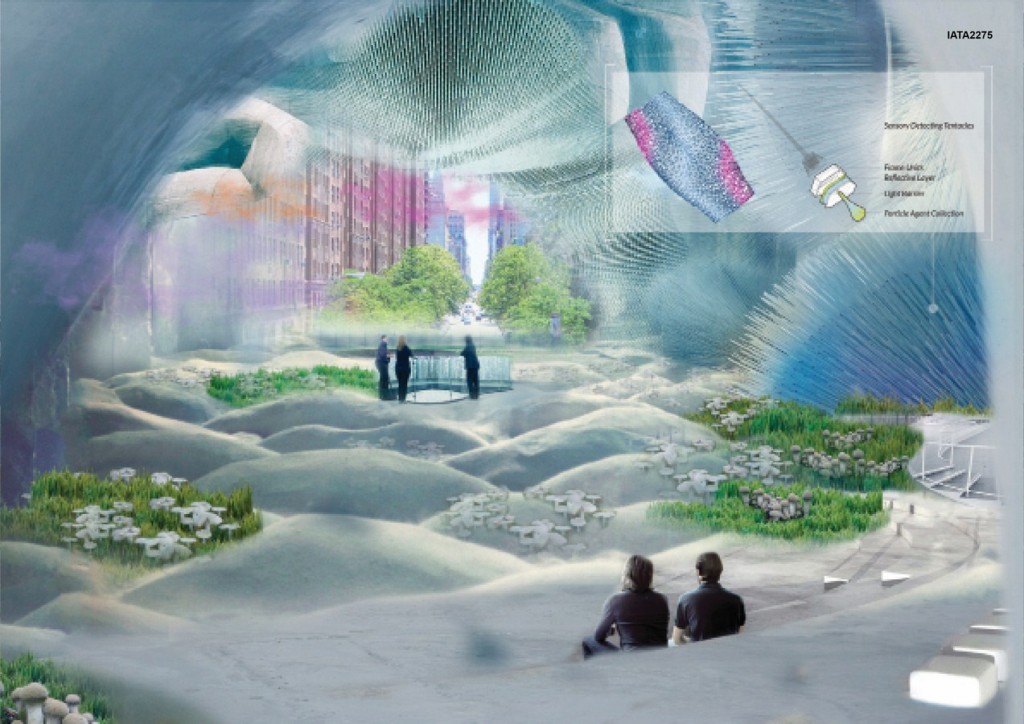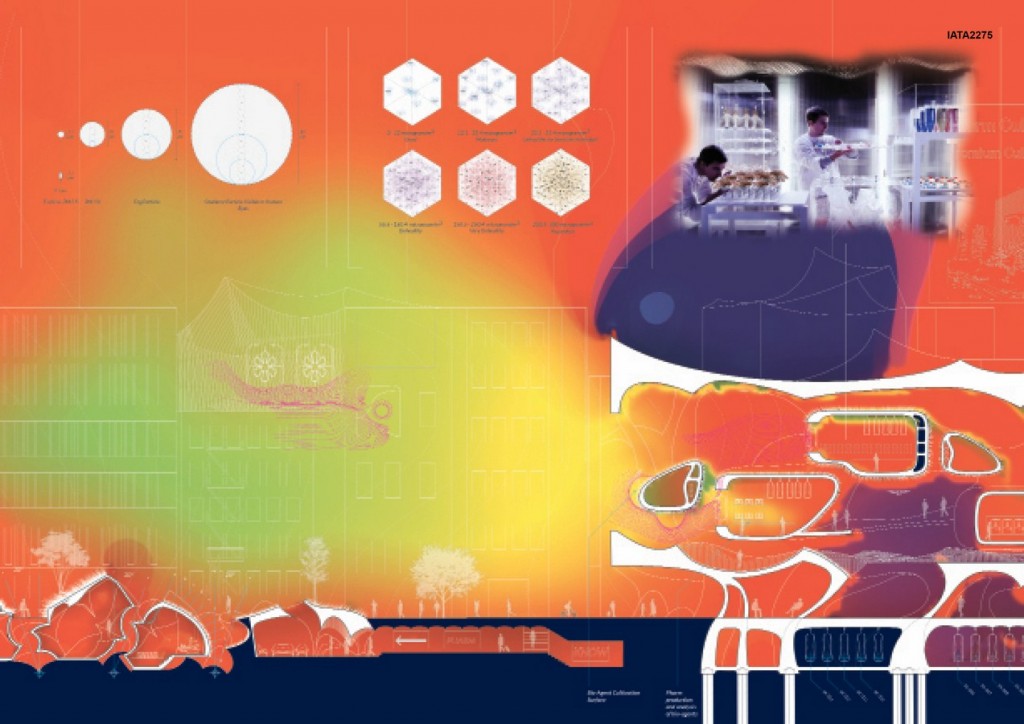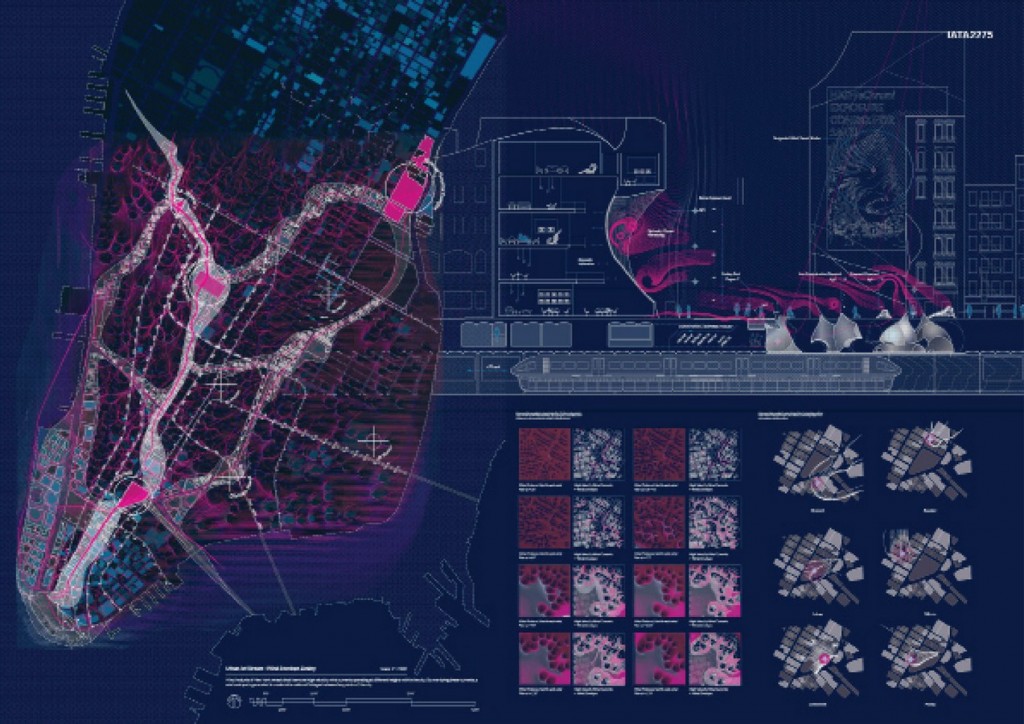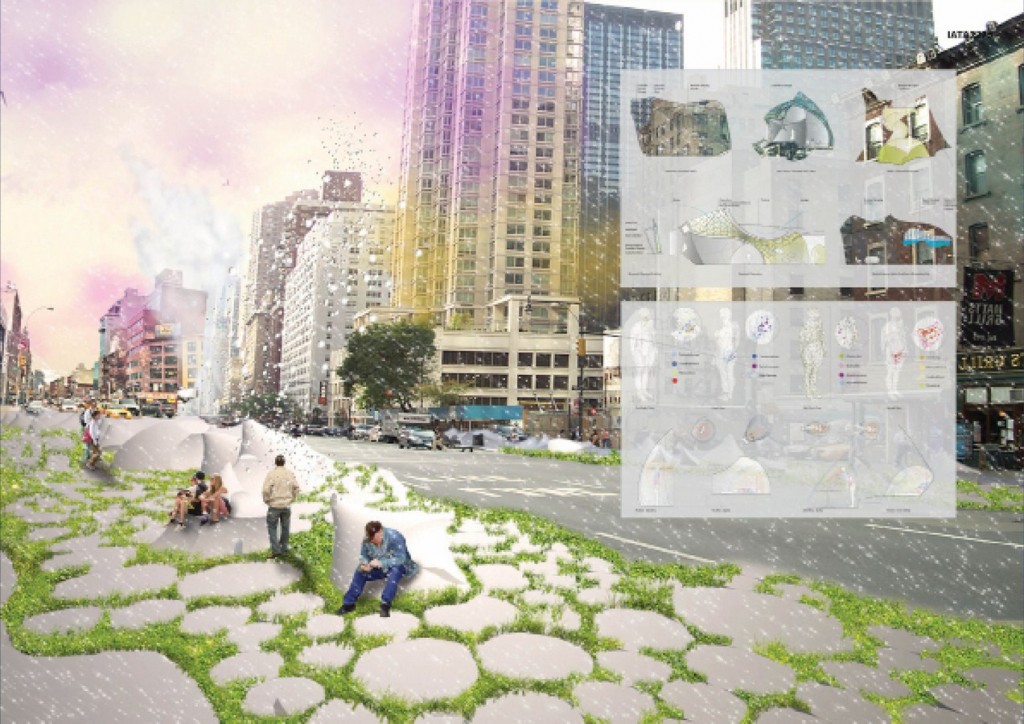In 2050, when you are brought to New York, you find yourself caught in a dialogue – a dialogue not with people but their doubles that’s unperceivable to the naked eye. The city and its population regenerate itself over the years. People start their days with gazing upon the window. Seeing through the coloured haze, they forecasts the day ahead of them accordingly.
Participant Name: Zherui Wang Molly Mason
Country: United States

The people move through the streets may all be strangers, but their bodies do not hold dissimilar microbes to their surrounds. The clunking sound coming from the below, coupled with an upward thrust of wind bringing preventative vaccination to the citizens, making immediate properties the most desirable over the others.
You return to the city after years and find the same dialogue still going on. Yet, the city has changed. The maternity ward no longer engages with the birth of one body but that of the multiples. The residential building become more accustomed to channelling beneficial microbes into citizens’ living room. The commercial towers no longer has a guarded security checkpoint but a swab actively detects the microbial fingerprint of bodies in space. The deceased bodies are treated and put to rest; no longer commeriated as a singular body but a collective.

Project Description: In the future, our access to biological (regarding the body and environment) information will not be exclusive to sites like hospitals but will be actively interacted with in public space. The mediation between citizens and information will occur through new building materials and generate types of facilities. This information will be accessed ambiently as well as specifically through systems which combine hardware, software and wetware.

Bacteria that has been genetically engineered can be distributed as an airborne system promises a globalized blanket coverage with high degree of resolution and specificity. Over the past couple decades, the scale and degree of specificity in which we collect information has steadily increased. Utilizing wetware, such as genetically engineered bacteria (ie. eChromi – genetically engineered e.Coli), as collectors of information promises better coverage globally and a degree of resolution locally.

The city’s airborne biological sensors will operate under the nature protocol of wind and building envelope. They will generate a wealth of information (both ambient and specific) and create linkage of points of the city previously not associate with each other.
The airborne infrastructure of bioagent dispersal will become noticeably ingrained in the city, generating public space in the city. The deployment of new airborne infrastructural system will not only capitalize the existing infrastructure of the city, these new infrastructures will, on one hand, transform cities into more stimulating environments for the human life, and on the other, questioning the social, political and cultural implication of information mining in relationship to body, architecture and city.
Prev Post
On Walking | Aaron Belzer
2 Mins Read
Next Post
Urban Acupuncture | Otto Kus
3 Mins Read



